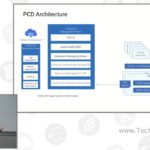|
|

Chris Jones and Roopak Parikh presented for Platform9 at CFD21 |
This video is part of the appearance, “Platform9 Presents at Cloud Field Day 21“. It was recorded as part of Cloud Field Day 21 at 8:00-10:00 on October 23, 2024.
Watch on YouTube
Watch on Vimeo
Platform9’s Private Cloud Director (PCD) architecture is designed to provide a managed private cloud experience, with distinct components that handle different aspects of the system. The architecture is divided into three main areas: the operations plane, the management plane, and the infrastructure layer. The operations plane is only available for customers who are hosted by Platform9, and it handles tasks like log collection, metrics, and alerting, allowing Platform9 to monitor and manage the infrastructure. For self-hosted customers, these capabilities are not integrated, but they can still use third-party tools like Splunk or Datadog for monitoring. The management plane, which runs on Kubernetes, is responsible for managing APIs, databases, and other core services, and it can be deployed either by Platform9 or by the customer in their own environment.
The process of onboarding servers into PCD is straightforward, thanks to Platform9’s bootstrapping agent, PF9. This agent is deployed on each server and reports back to the management plane, allowing users to configure their infrastructure through the UI or API. The system supports various operating systems like Red Hat, Ubuntu, and CentOS, and Platform9 provides tools like Ansible, Pixie, or Ironic to automate the deployment of hundreds of nodes. Once the servers are onboarded, users can configure enterprise features such as high availability, virtual machine rebalancing, and virtual network creation. Additionally, Kubernetes clusters can be easily created on top of the virtual machines, with Platform9 handling the automation of network and load balancer setup.
Platform9’s architecture also draws parallels to VMware’s ecosystem, with features like DRS (Distributed Resource Scheduler) being comparable to Platform9’s rebalancing feature. The company acknowledges that for users familiar with VMware, there may be a need for a “Rosetta stone” to translate between VMware’s terminology and Platform9’s offerings. Throughout the presentation, Platform9 aims to highlight these parallels to make the transition easier for users coming from a VMware environment. The architecture is designed to be flexible and scalable, catering to both hosted and self-hosted environments, while providing a robust set of tools for managing private cloud infrastructure.
Personnel: Chris Jones, Roopak Parikh








